HDB gardening mistakes
Singapore might be known around the world as the Garden City, but that doesn’t mean every Singaporean is born with green fingers. If you’ve had no luck with plants since that Primary school taugeh-growing project, you’re not alone. From soil media to pH, gardening can be rather intimidating for beginners, paving way for these gardening mistakes.
Whether you’re trying to be the neighbourhood horticulturist, or just to grow some humble herbs for your pasta, here are 10 gardening mistakes to avoid for an easy headstart on your indoor jungle.
Check out our other articles on indoor gardening:
- Supermarket vegetables you can grow at home
- Indoor plants to purify the air
- Urban farming guide to a home garden
1. Giving your plants the wrong amount of sunlight
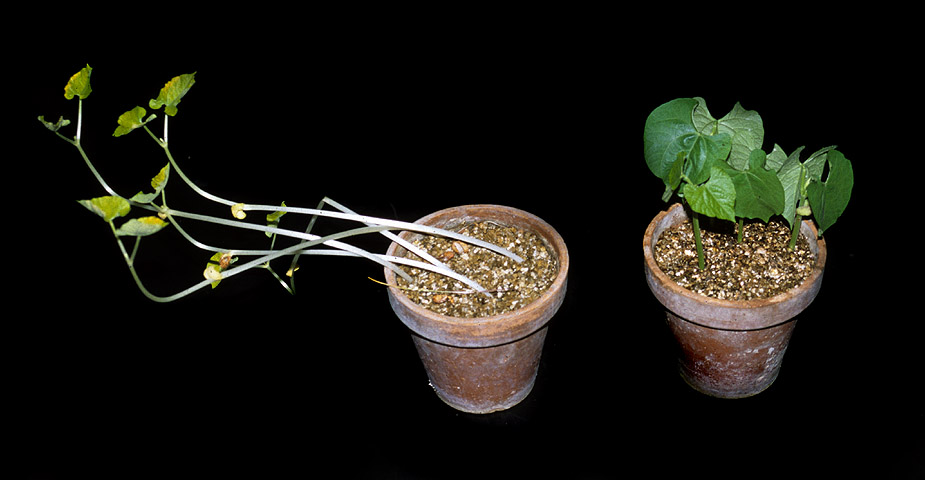
Without sufficient sunlight (L), plants stretch themselves out to look for more. Healthy specimens (R) will have a dense, lush set of leaves.
Image credit: University of Wisconsin Department of Botany
Many plant owners think that direct sunlight is necessary for healthy growth. However, both too much and too little can be harmful – the exact amount varies between indoor and outdoor plants. Knowing what “type” of plant you have is half the battle won when trying to keep your green friend alive.
To spot when your plants are receiving insufficient sunlight, look out for elongated stems, and yellowed, dropping leaves. Conversely, too much sunlight will cause dry and yellow bleached spots on its leaves.
Pro tip: Ensure that your indoor plants like begonia, aloe vera and various ferns are kept within 1M of the window to receive ample diffused sunlight. On the flip side, edible herbs and vegetables, along with cacti and succulents should be placed close to a window as possible, ideally receiving 4-6 hours of direct sunlight daily.
2. Using the wrong soil/substrate
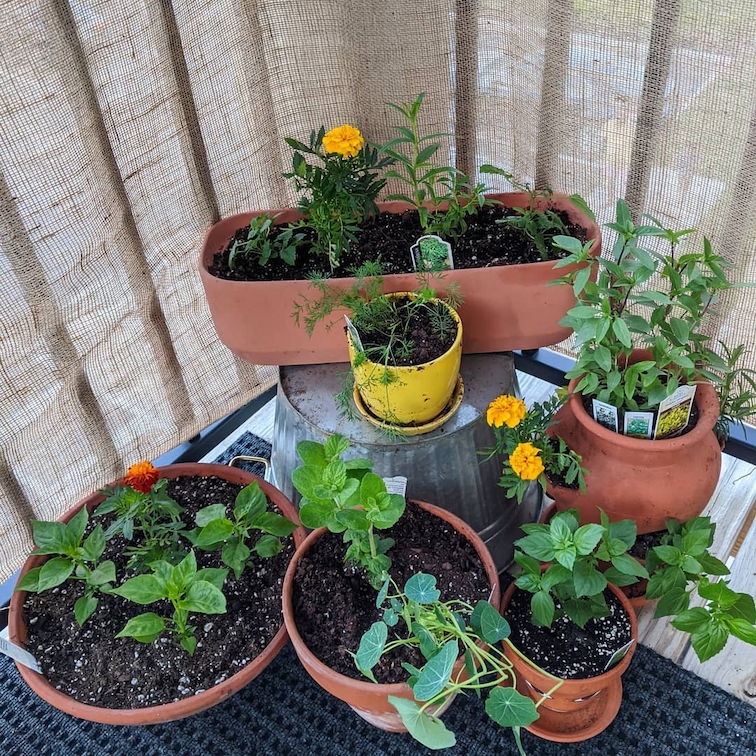
Potted plants require potting mixes, which are soil-free substrates.
Image credit: @thetiefenator
Before you reach for a shovel to snag soil from the sidewalk to grow your plants, know that regular outdoor soil does not hold the right amount of water and nutrients that your houseplants need.
Even if you’re thinking of buying a pack of soil from a nursery and calling it a day, not every plant thrives on soil alone. A foolproof and convenient option is to purchase premade potting mix – a soil-like substrate that often doesn’t contain soil at all.
DIY fanatics can assemble their own simple 2-ingredient potting mix with peat moss and perlite obtained from a garden supply store. Topped off with some compost, this will provide the perfect growing conditions for most potted plants.
Pro tip: If you’re left with plenty of dry, old potting mix from your dead plants, you can easily revitalise it. Break it up with a hand fork, sterilise it with boiling water, and then add compost.
3. Using fertiliser too often
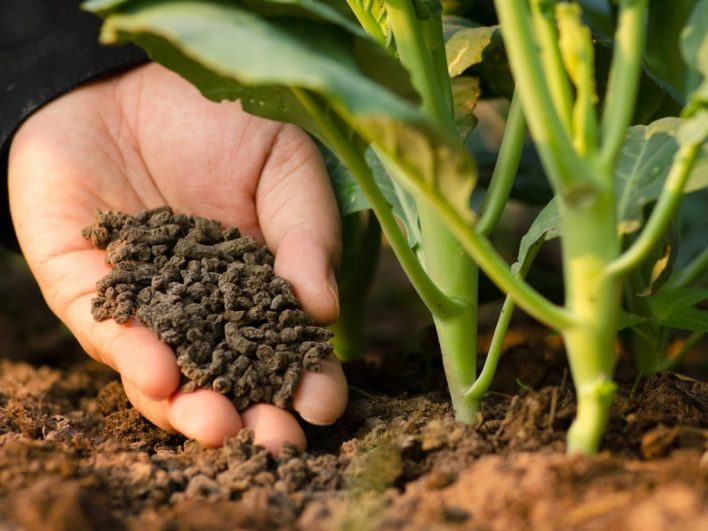
Image credit: MultPrime
If you’re smothering your plants with fertilisers, it really can be too much of a good thing. Applying them too often might over-increase the acidity of the soil, attract pests and even cause diseases. As a general guide, follow this rule of thumb:
Organic fertiliser (compost): Once a week
Chemical fertiliser: Once every two weeks
The simple, effective compounds in chemical fertilisers make for a quick nutrient boost for fast-growing house plants. But if you’re concerned about dousing vegetables with chemicals or planning to nurture your little green friends for the long haul, organic fertilisers are the way to go.
4. Not using compost
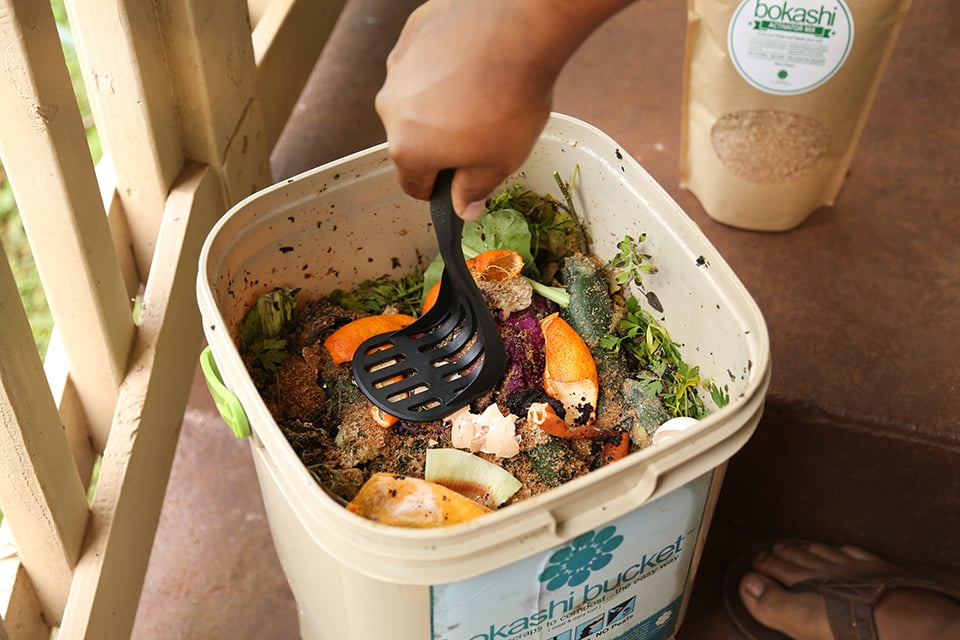
Image credit: Urban Worm Company
Traditional organic fertilisers feature stinky manure as its main ingredient, which isn’t ideal for your cosy, enclosed HDB flat to say the least. For us urbanites, using compost is the best option. While you can buy ready-made organic compost from most nurseries, avid home chefs can save some money by collecting food and packaging waste headed for the bin, letting them break down in a covered pail to create a nutrient-rich treat for the plants.
Most importantly, composting is a practical step towards a #zerowaste lifestyle, letting you give organic waste a second lease of life. Watch as your seedlings sprout forth from last week’s newspapers and vegetable off-cuts!
5. Using the wrong pots or containers
 Image credit: Gallatin
Image credit: Gallatin
Apart from composting, reusing plastic containers for your plants is another way to go green while growing green. Even so, ensure that your containers are non-toxic, marked with recycling symbols 1, 2, 4, or 5.
Other plastics marked 3, 6 and 7 which include PVC pipes and styrofoam cups might leach toxic chemicals under sunlight – something you’d want to avoid if you are growing plants for consumption.
Opting for porous earthenware pots like those made from terracotta allows air to permeate the soil and root zone, helping to prevent root rot. When picking a pot, ensure that it’s at least 5CM wider in diameter than your plant so it doesn’t stunt the growth.
Check out our article on DIY home garden ideas
6. Watering the leaves of indoor plants
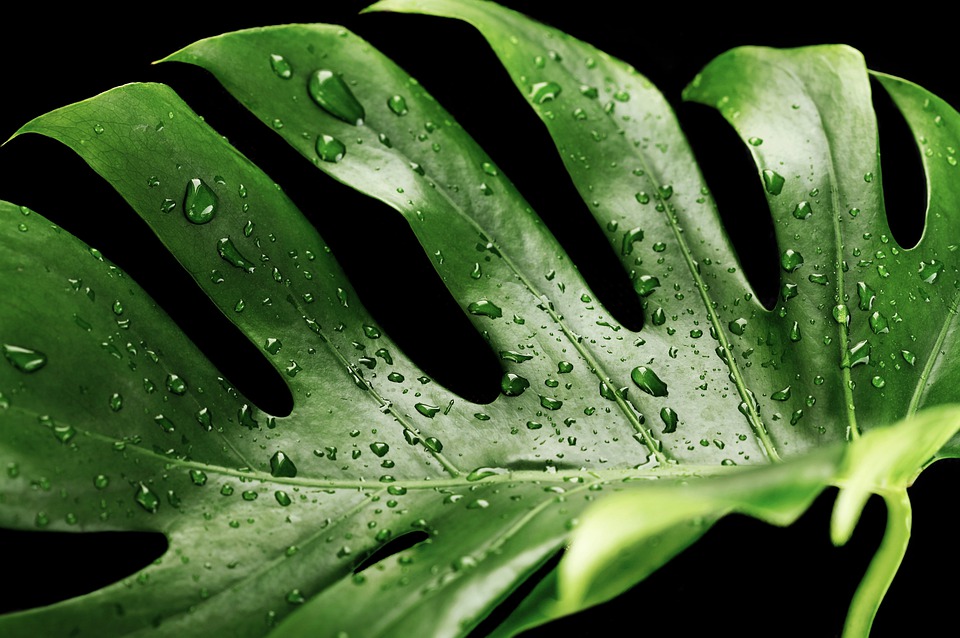
Watering plant leaves is one of the most common gardening mistakes that can have serious consequences
Image credit: Nika_Akin
While it certainly looks photogenic, getting water on the leaves of your beloved indoor plant risks fungal growth and other infections. While some species of air plants and ferns thrive in moist environments and can be watered with a spray, most plants are best served with a long-spouted watering can to hydrate the roots precisely.
Kept indoors, the moisture on the leaves can’t evaporate as fast as a plant receiving direct sunlight outdoors. It’s best to keep aesthetic water droplets on leaves where they belong – computer wallpapers.
7. Not cleaning your plants
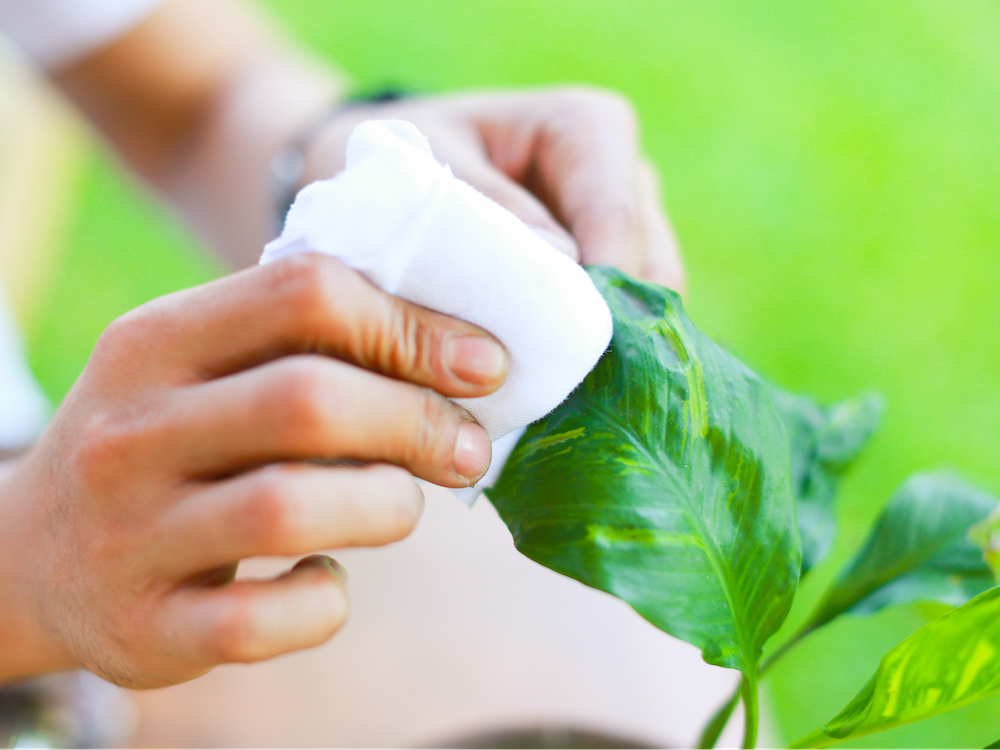
Image credit: wikiHow
Just like how you unclog your pores by washing your face daily, cleaning your plants is an important step missed by even the most experienced gardeners. Wiping both the top and bottom of each leaf with a damp, clean rag will ensure the plant can breathe and transpire freely.
In addition to preventing dirt build-ups, a clean surface also discourages fungal growth and pests. As an added precaution, wash the rag thoroughly between plants to prevent the spread of any diseases.
8. Overwatering your plant
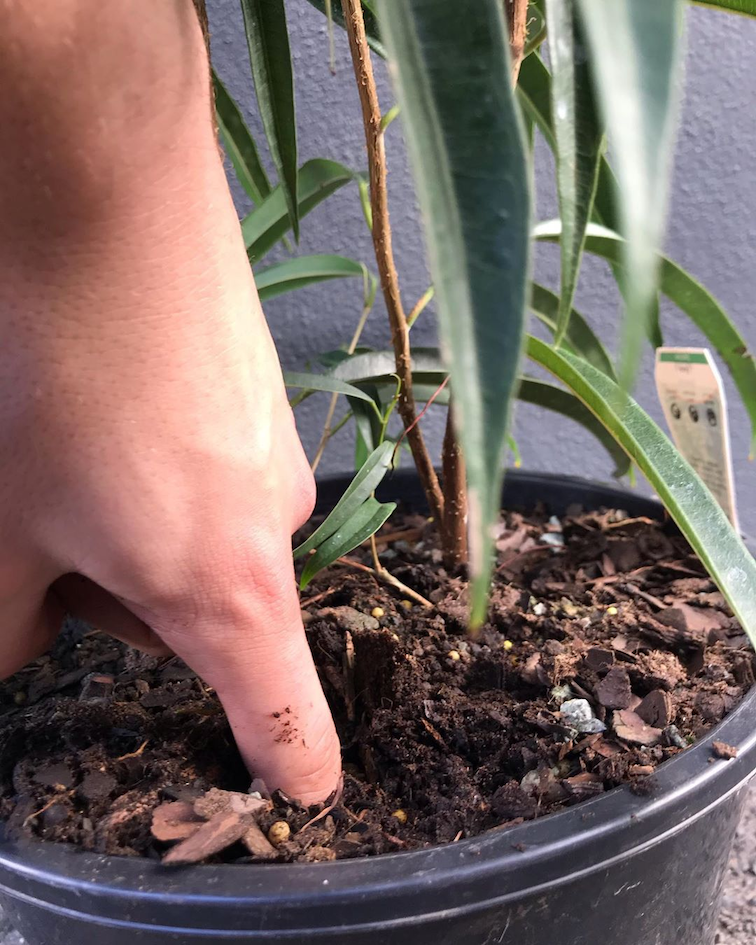
To avoid gardening mistakes like overwatering, you can simply stick your finger into the soil to check for moisture.
Image credit: @gardenstreetgarden
All living things require water to survive, but us humans have to consume plenty of water before it harms us. However, for plants, overwatering is a real danger that can lead to “drowning” or root rot.
If the leaves are brown or yellow, yet soft and limp (as compared to dry and fragile), it might be a sign of overwatering. Simply put, plant roots need air to survive, and saturating the soil with water prevents that.
Though the watering schedule for each plant depends on its species, stage of growth, pot size, and evaporation, it pays to research your plant’s watering needs to prevent an unforeseen plant death. As a general rule, aim to add plenty of liquid as infrequently as you can – anywhere from twice a week for large pots to daily for tiny ones. Watering in the evenings also reduces evaporation, letting the soil and roots absorb moisture better.
Pro tip: Stick your index finger about 2.5CM (until the first knuckle) into the soil. Only add water if it feels dry. Soil testers are also an inexpensive way to check this.
9. Not investing in a pH meter
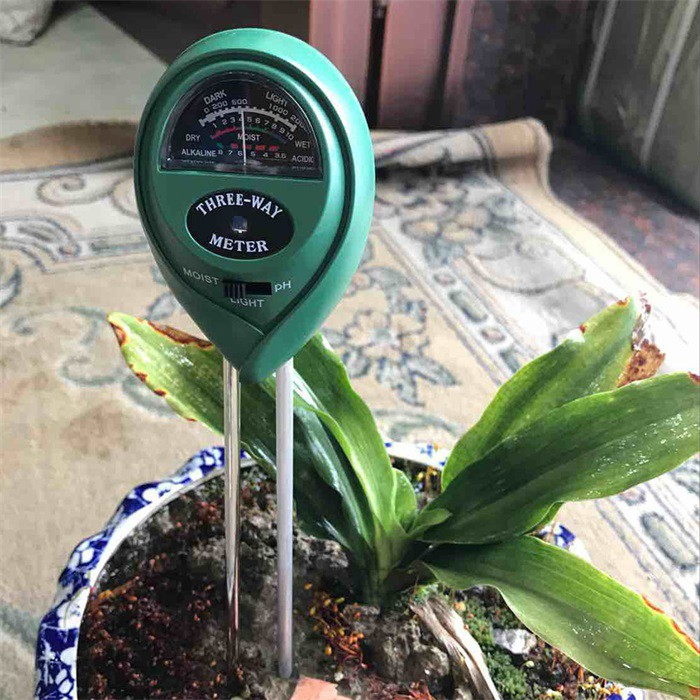
Soil testers are a useful tool to assess the growing conditions of your potted plants
Image credit: Shopee
Apart from light, water and fertiliser, plants also thrive when the soil is at an optimal pH where they grow the healthiest – basil and sage at 5.5-6.5, lettuce and broccoli at 6.0-7.0. Costing as little as $5, a pH meter is an indispensable tool when creating the ideal growing conditions for your plants.
Technically, small changes in pH don’t directly affect the plants, but the acidity and alkalinity can help or hinder the plant’s ability to absorb essential nutrients. To help you tweak the soil pH to just the right amount, here are some DIY solutions:
To reduce acidity: Spray the soil with a mixture of 1 tablespoon of baking soda and 2L of water. You can also reduce the usage of acidic fertilisers – watering with slightly alkaline local tap water will correct the soil pH.
To increase acidity: Add used coffee grounds into the pot, or a tablespoon of vinegar mixed into 2L of water.
10. Not pruning your plants
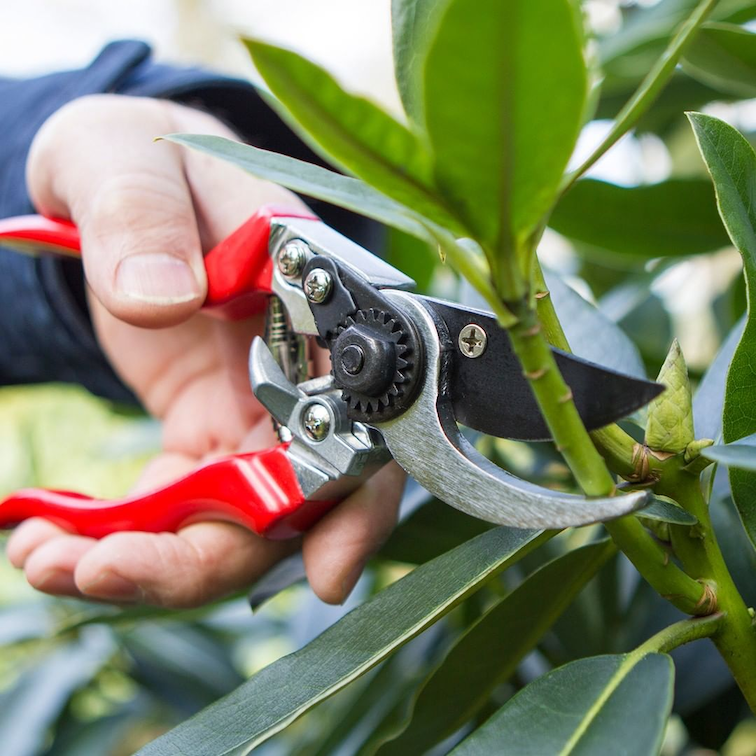
Trimming your plant can encourage thicker, healthier growth.
Image credit: @darlactools
For the uninitiated, snipping off bits of your plant to boost its growth seems counterintuitive. However, snipping off withering leaves and haphazard branches helps plants save nutrients, letting it focus its resources on the most beautiful leaves, fruits and flowers.
To get that lush foliage or plump fruit, prune your plant at a 45-degree angle with clean, sharp pair scissors. This will avoid damage and infection, and will maximise surface area for the plant to continue growing where it was pruned.
For long, scraggy offshoots that look unkempt, aim to trim 10-20% of your plant at a time to encourage denser growth.
Pro tip: In addition to composting the trimmings from your healthy plant, you can also propagate these leaves and stalks for new plants instead of throwing them away.
HDB gardening mistakes to avoid
Nurturing plants might seem tedious but can be a very rewarding experience. Whether you’re working on the basics like watering or going pro with pH scales and DIY potting mixes, avoiding these gardening mistakes will definitely help your plants be more fruitful.
Check out our articles on where to obtain gardening supplies:
- Plant growing kits to buy online
- Boutique plant shops in Singapore
- Plant nurseries sorted by location
Cover image credit (L-R): Pexels, Crafty For Home
Originally published on 9th June 2020. Last updated by Renae Cheng on 13th July 2021.





